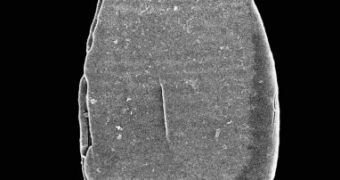Scientists have reconstructed the Earth's climate belt of the late Ordovician Period, 460-445 million years ago. The research was carried out by an international team led by Dr. Thijs Vandenbroucke, at the University of Lille 1 (France) and included Mark Williams and Jan Zalasiewicz of the Geology Department of the University of Leicester.
Besides the extraordinary achievement of determining the planet's climate some 450 million years ago, what is very surprising is that the ancient climate belts were very similar to those we have today. Scientists analyzed the global distribution of mysterious fossils called chitinozoans, before and during this Ordovician glaciation, and found a pattern that showed the position of ancient climate belts, along with features of the polar front that separates the cold polar waters from the more temperate ones.
Thanks to what might be the egg-cases of extinct planktonic animals, researchers found that these belts changed as the planet entered the Ordovician glaciation, but in a similar way to what happened when they adjusted to our current Ice Age.
The scientists said that “The world of the ancient past had been thought by scientists to differ from ours in many respects, including having carbon dioxide levels much higher – over twenty times as high – than those of the present. However, it is very hard to deduce carbon dioxide levels with any accuracy from such ancient rocks, and it was known that there was a paradox, for the late Ordovician was known to include a brief, intense glaciation – something difficult to envisage in a world with high levels of greenhouse gases.”
This new way on determining the climate in ancient times, indicates that the carbon dioxide levels were only five times higher than today and not even close to the high levels given by previous analysis. The fact that they were higher than nowadays is normal, if we think that in those times, the sun had less power and shone less brightly.
Researchers conclude that “These ancient, but modern-looking oceans emphasize the stability of Earth’s atmosphere and climate through deep time – and show the current man-made rise in greenhouse gas levels to be an even more striking phenomenon than was thought,” AlphaGalileo reports.
This report has been published online in the Proceedings of the National Academy of Sciences of the USA.

 14 DAY TRIAL //
14 DAY TRIAL //